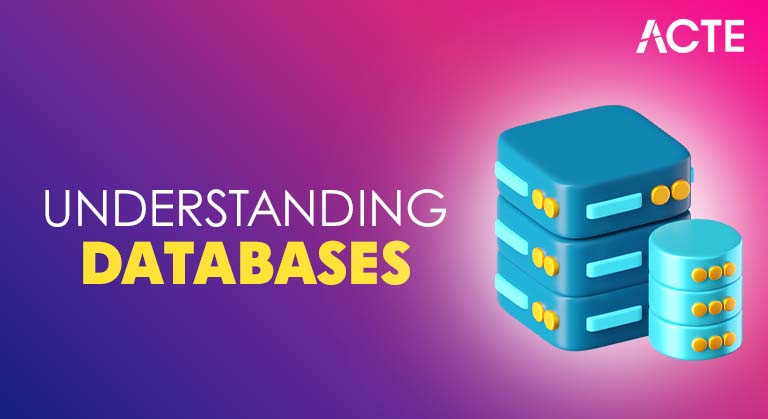
- Definition of Database Management System
- Types of Databases
- Functions of DBMS
- Components of DBMS
- Architecture
- Data Independence
- Database Management System Examples
- Benefits and Drawbacks
- Applications of DBMS
- Conclusion
Definition of Database Management System
A Database Management System (DBMS) is a software application that interacts with users, applications, and the database itself to capture and analyze data. It allows for the creation, retrieval, updating, and management of data in a structured format. Database Training introduces the foundational goals of DBMS. DBMS is designed to manage large volumes of data efficiently and securely while ensuring data integrity, minimizing redundancy, and supporting concurrent access. DBMS acts as an interface between the end-users and the database, ensuring that data is consistently organized and easily accessible. It automates standard database operations and maintains control over data access.
Do You Want to Learn More About Database? Get Info From Our Database Online Training Today!
Types of DBMS
In the rapidly changing world of data management, databases and data warehouses have different but associated roles. The database is finely tuned for real-time transactions. They allow maintaining data integrity and reaching many users to access data at once, which is necessary for daily business activities. On the other hand, data warehouses are designed for analytical processing. They add various data sources to a central location, enable complex questions, and provide intensive historical insights. This targeted approach helps organizations to manage daily operations by obtaining strategic value from their collected data.

The database management system (DBMS) can be classified into several types based on their data models and structures. The hierarchical DBMS, which was first developed by a system such as IMS of IBM, conducts data in a format-like format with strict parent-child relationships. The network DBMS creates on this idea using a graph structure, which allows for more complex relationships, as seen in the integrated data store (IDS). The most common type is the relational DBMS (RDBMS), which stores data in tables for data manipulation and uses the structured query language (SQL). Popular examples include Oracle, MySQL, and Microsoft SQL servers. Object-oriented DBMS takes a different view by including object-oriented programming principles in database technology and stores data as an object, with examples such as ObjectDB. New techniques such as document-oriented and NoSQL DBMS have also become popular. These are specially designed to handle unnecessary and semi-composed data effectively, with mongodb and couchbase notable examples.
Functions of DBMS
MySQL Databases rely on the functions of DBMS to perform a variety of critical roles in managing and maintaining data systems. These functions include data storage, retrieval, integrity enforcement, concurrency control, and access management ensuring efficient, secure, and scalable database operations.
- Data Storage Management: Efficient storage and retrieval of data.
- Data Manipulation: Provides query languages like SQL to insert, update, and delete data.
- Data Security and Authorization: Ensures that only authorized users access or modify data.
- Data Integrity Management: Maintains consistency and accuracy.
- Concurrency Control: Supports simultaneous data access by multiple users.
- Backup and Recovery: Maintains data safety in case of failures.
- Transaction Management: Ensures ACID (Atomicity, Consistency, Isolation, Durability) properties.
- Data Dictionary Management: Maintains metadata (data about data).
- Hardware: Physical devices like servers, storage devices, and network infrastructure.
- Software: The DBMS software itself, which includes utilities, query processors, and reporting tools.
- Data: The core component stored data, organized as per a model.
- Database Access Language: Languages like SQL used to interact with the database.
- Database Administrator (DBA): Manages the DBMS and ensures its smooth operation.
- Application Programmers: Develop applications that interact with the DBMS.
- End Users: Use applications to access and manipulate data.
- Oracle Database: Highly scalable RDBMS with robust features.
- MySQL: Open-source and widely used, especially for web applications.
- Microsoft SQL Server: Enterprise-level support and integration with Microsoft tools.
- PostgreSQL: Open-source and feature-rich, supports complex queries.
- MongoDB: NoSQL database used for unstructured and semi-structured data.
- IBM DB2: Optimized for high-volume data transactions.
- SQLite: Lightweight, serverless, ideal for mobile and embedded systems.
- Data Consistency: Reduced redundancy and enforced integrity constraints.
- Security: Fine-grained access control.
- Concurrent Access: Multiple users can work simultaneously.
- Data Sharing: Centralized storage allows for easy sharing.
- Backup and Recovery: Built-in mechanisms for data safety.
- Data Independence: Allows schema changes without impacting applications.
- Scalability: DBMS solutions can grow with data volume and business needs.
- Ease of Maintenance: Centralized management reduces effort.
- Cost: High licensing and maintenance fees.
- Complexity: Requires skilled personnel for setup and maintenance.
- Hardware Demands: Resource-intensive, requiring powerful infrastructure.
- Performance Overhead: For very simple data operations, DBMS might be overkill.
- Vendor Lock-in: Switching between different DBMS platforms can be difficult.
- Banking and Finance: Account management, transactions, risk analysis.
- Fraud detection and audit trails.
- Education: Student records, exam schedules, course materials.
- Online learning platforms and resource tracking.
- Healthcare: Patient records, treatment history, billing.
- Boost Your Competitive Advantage with NoSQL Databases by integrating with diagnostic tools and telemedicine platforms. This empowers healthcare systems with scalable, real-time data handling for enhanced patient care and operational agility.
- Telecommunication: Call records, billing systems, customer information.
- Network management and user behavior analytics.
- Retail and E-commerce: Inventory, order tracking, customer profiles.
- Recommendation systems and dynamic pricing.
- Government: Identity management, tax records, public services.
- Land records, policy databases, and voting systems.
- Transportation: Ticket booking, cargo tracking, fleet management.
- Media and Entertainment: Content storage, user analytics, subscription management.
Would You Like to Know More About Database? Sign Up For Our Database Online Training Now!
Components of DBMS
The components of a Database Management System (DBMS) encompass both technical infrastructure and user roles:
Architecture
Database Management System (DBMS) architecture has three main models that address various system complications and organizational requirements. Single-level architecture is the simplest approach. In this model, customers connect directly to the database, which makes it suitable for small systems with low complexity. Database Training explains architectural models as data demands scale. With an increase in the requirements of an organization, two-level architecture becomes a better option. This model separates the client and server environment. The client interacts through an application server, which directly communicates with the database. The most complex model is a three-level architecture. It adds an additional layer between the client and the database server. This design provides better scalability, strong security features, and a clear separation of functions, which allows for more flexible and efficient system design. In architecture, this progression reflects the changing technology scenario and gives organizations more advanced options to manage their data.
To Earn Your Database Certification, Gain Insights From Leading Blockchain Experts And Advance Your Career With ACTE’s Database Online Training Today!
Data Independence
Data freedom in database management is an important idea. This allows changes in the scheme at various levels without disrupting the overall system. This flexibility comes from two main mechanisms: logical data enables changes in logical schematics without affecting freedom of external schematics, and physical data allows freedom to amend storage structures without changing the logical schema. By offering this adaptability, the data freedom system improves longevity and makes maintenance easier.

Data models also play a role. How they add data, set the framework, store it, and access it. This includes attitudes such as hierarchical, network, relationship, unit-relation, and object-oriented models. Each model has its own strategy for organizing and representing data. These range from tree-like structures to tables, institutions, and programming language integration to complex relationship mapping. Together, these models give database professionals the devices that they need to create strong and scalable data management systems that can change with technology and business requirements.
Database Management System Examples
Overview of SQL Server sets the stage for understanding widely used DBMS solutions. Here are some popular examples: Oracle Database, MySQL, PostgreSQL, IBM Db2, and Microsoft SQL Server. Each system offers distinct features tailored to scalability, security, and operational needs.
Preparing for a Database Job? Have a Look at Our Blog on Database Interview Questions and Answers To Ace Your Interview!
Benefits and Drawbacks
Benefits:
Drawbacks:
Applications of DBMS
DBMSs are used across diverse sectors, such as:
Conclusion
A Database Management System (DBMS) is a vital component in the modern data-driven world. It offers an organized, efficient, and secure way of managing large volumes of data. From handling complex queries to supporting multiple users, DBMS enhances data accessibility, security, and integrity. Despite some costs and complexities, its benefits in scalability, data consistency, and usability make it indispensable for virtually every industry. As organizations continue to evolve in the digital age, the demand for robust data systems grows. Database Training emphasizes the critical role of DBMSs in enterprise data operations. DBMSs are crucial not only for operational efficiency but also for strategic decision-making. Whether managing customer data, financial transactions, or academic records, the DBMS offers unmatched flexibility and control. Understanding DBMS is essential not only for database administrators and developers but also for anyone involved in digital systems. As data continues to grow in volume and importance, DBMS will play an increasingly central role in shaping business intelligence, automation, and innovation.


